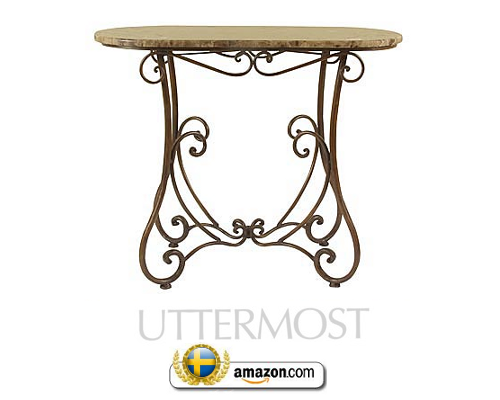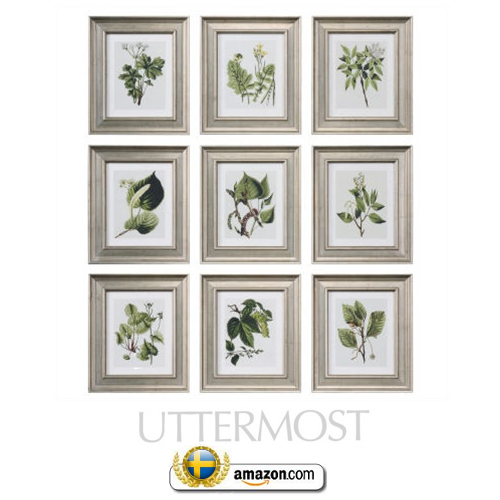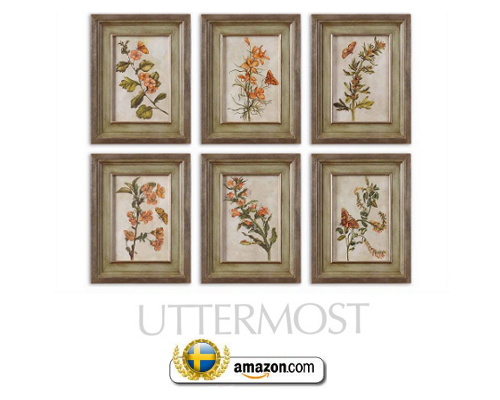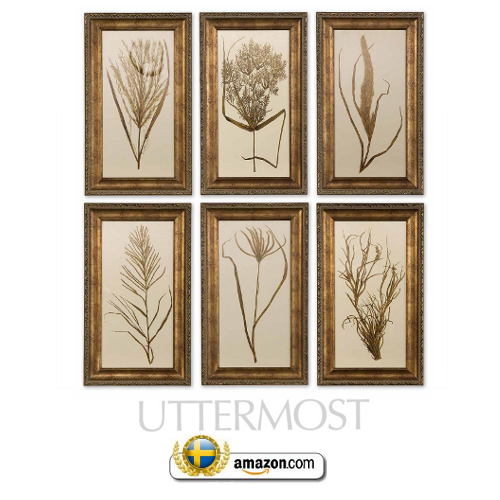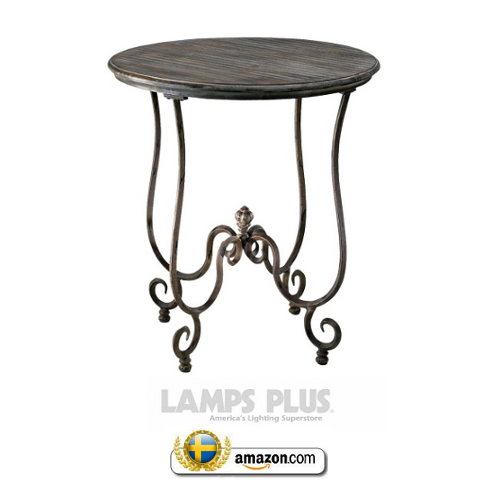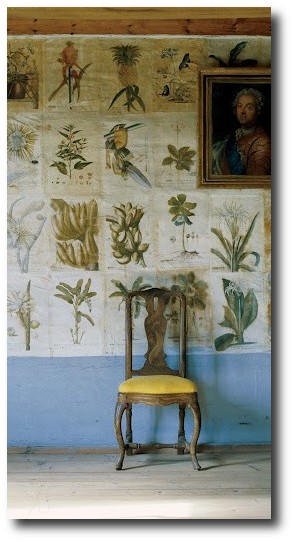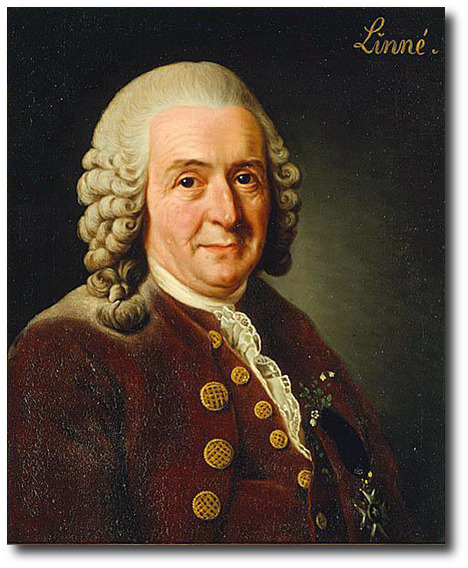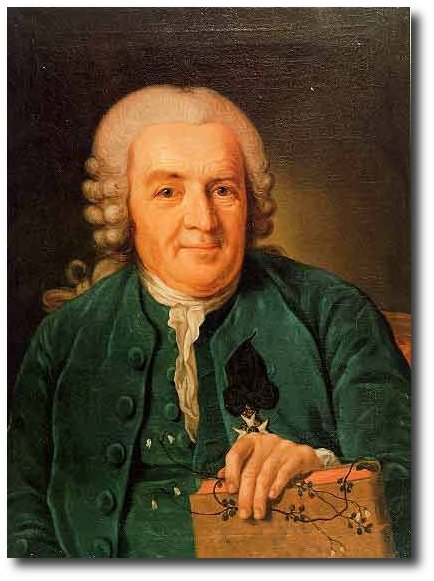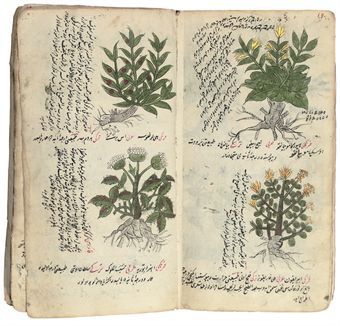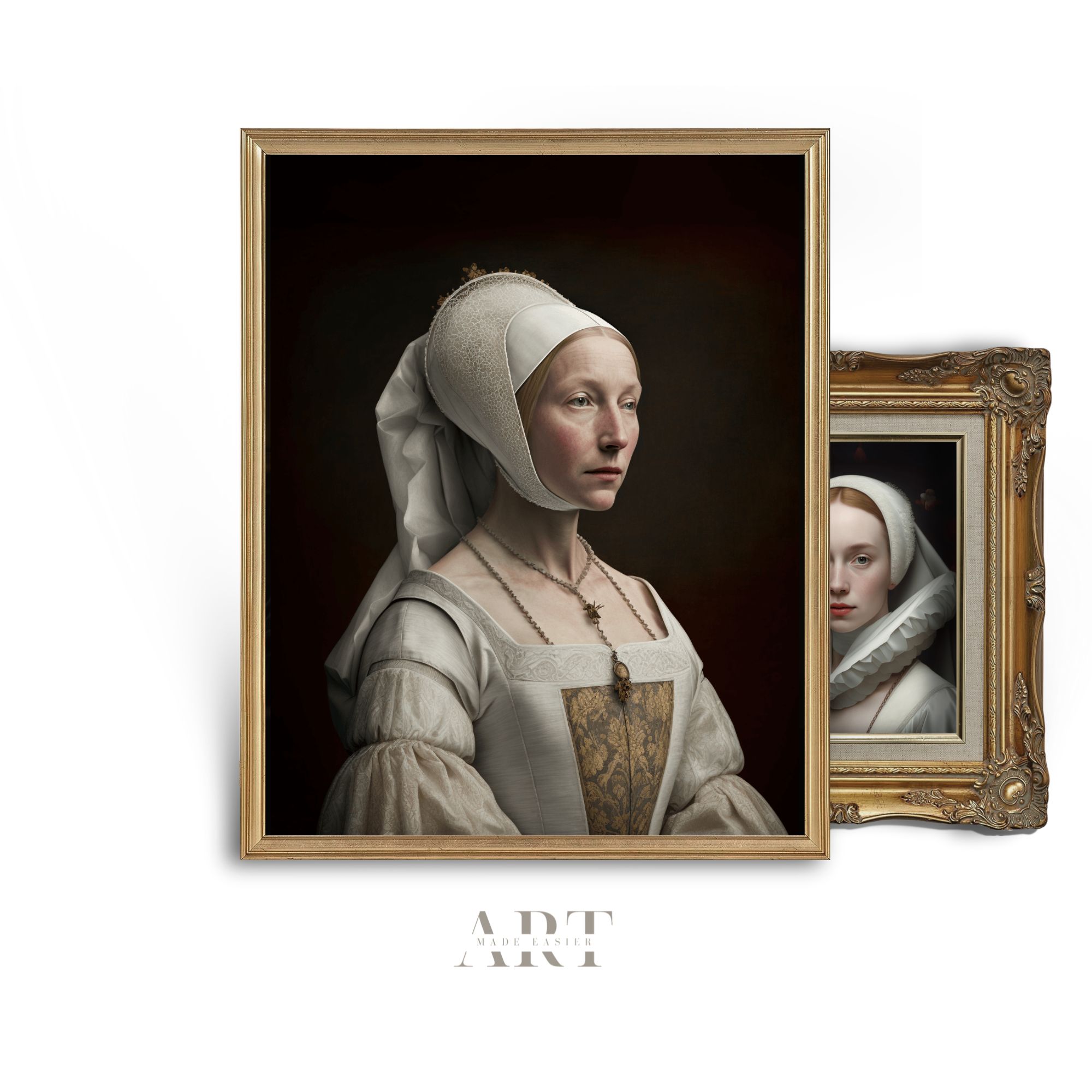How To Decorate With Botanicals
Today Linnaeus’ Hammarby is one of Sweden’s most accurately preserved eighteenth century farms, with household items, clothing and art from Linnaeus’ own home. Carl von Linné (Linnaeus) bought the farm in 1758, and it became the Linné family’s “summer residence” . The family was able to keep animals and grow vegetables, grains for bread, and tobacco. Carl Linnaeus, papered his bedroom in plant posters, of the works by the French botanist Charles Plumier (1646-1704) and British Georg Ehret (1707-1770). Sängförhänget is a print based on his favorite flower “Linnaea borealis” – in short, the Linnean. Linnaeus’ study appears today, much like it would have looked when he was alive, with walls papered with flower illustrations.
In the 1600s, botanical artists were thought to lead an exciting life. Many left on expeditions to exotic locations around the world, devoting their lives to documenting plants, bulbs, and flowers in some of the most breath taking gardens around the world. Publishers would issue their etchings as part of an encyclopedic or scientific project. Wealthy people then would subscribe to a series, and whole collections were often displayed and bound into books.
Johan Wilhelm Palmstruch (1770-1811)
Cover A Chest With Botanical Prints
Martha Stewart had a 8 page article about this very topic in her September 2004 issue of Martha Stewart Living. She showed how to pull this look together using two different techniques. The first technique showed wallpaper which was cut out, and glued on to a piece of furniture, while the second technique glued selected sheets of botanical prints to a chest.
Project 1 shows a large wardrobe, which botanical wallpaper was carefully cut out. Images were arranged on the wardrobe using the placement seen in the original wallpaper pattern. In the article they suggest using one sided tape to arrange the graphics, which then can be removed later to glue each graphic down. Another easy way of doing this is to lay the wardrobe down on the ground, and then glue each motif in place. Remove air bubbles, which may squeeze out glue from under the image. Simply use a damp paper towel to wipe away any access glue. Touch up the edges with glue to seal any places around the image that might have been dried up. Let the glue dry overnight, and then apply water based satin polycrylic to seal the graphics.
The second chest which is featured shows botanical prints which were measured out, and glued to a chest. In this instance, botanical prints were measured and cut to size. Martha suggests using craft paper which show the measurement of the drawer, which allow you to determine each prints dimensions. Cut prints using a sharp utility knife and metal ruler. Plan your design by laying out each print on the dresser, arranging the prints before you glue them in place. Next, brush mod podge glue on the back of the print, and apply it to the drawer. Smooth the image out, removing any air bubbles. Repeat the process with all the images, and let the glue dry over night. Add a water based polycrylic clear coat, and either several coats of thick mod podge, or gloss epoxy as a finishing touch. Add new hardware, or attach existing hardware to complete the look.
Gustavian Decorating November December 2010 Veranda From Wilson Kelsey Design Blog
This lovely Uttermost Ava Table is an iron table with a marble top, perfect for seating in the kitchen or living room. The lovely scrolled iron legs are a bit of a break from wood. Uttermost sells this table for m$355.
Uttermost sells a lovely set of Leaf Botanical frames in a set of Nine. This set features a wide array of leaf prints, this art is accented by frames that have
a champagne silver leaf base with a gray glaze & light black distressing. Uttermost sells this set for $306.
Uttermost Set of 6 Ferns I-VI Botanical Wall Art Prints by Uttermost- Each of these six framed botanical wall art prints presents a beautiful illustration of a fern with its scientific name. Frames feature a champagne silver leaf base with brown and black wash and a gray glaze, and the prints are presented under glass. A fantastic accent for your walls from Uttermost. Set of 6
Orange Florals 18×14 Framed Wall Art I, II, III, IV, V, VI (Set of 6) by Uttermost These floral prints are accented by wooden frames with silver leaf inner and outer edges that have a light brown wash. Center section of frames have a sage green base with a heavy brown wash. Prints are under glass.
Set of 6 Wheat Grass Art Accents Sold through Uttermost– This set of prints features wooden frames finished in bronze undertones with brown and black distressing and a gray glaze. Prints are under glass.
Universal Lighting and Decor also sells a lovely iron table which features dainty iron legs with organic curves that lead to a decorative finial. These curved legs are topped with a round, limed pine wood table top. Lamps Plus sells this table for $355
Make Your Own Botanical Plates
Annekata Blog walks us through step by step how to make your own botanical plate using decoupage techniques. Being that there are plenty of royalty free sources containing vintage botanical, animals, and sea life art available for download, why not dress up a set of plates found at your local thrift store, or estate sale?
They suggest working with a glass plate. Simply lie the glass plate face down onto the paper you’ve selected, and center the pattern, and cut around the plate. Draw a line around the plate roughly 0.5 to 0.75 inches out. Next, relax the paper in water for 30 seconds. Glue up the bottom of the plate, and then center the wet paper face down on the bottom of the plate and carefully smooth out any air bubbles. Annekata Blog gives us some visual aids to show where to cut the print around the plate for the botanical print to best adhere to the glass without bubbles. Next, trim the rim with your scissors, and once it is dry, the plate can be hung on the wall.
Another way of creating botanical plates is to start of with a set of white plates. Simply cut out the images with a pair of fine scissors, which then can be glued on to the plate. First soak your prints in water, then add mod podge glue to the back of the images. After your images have dried, paint on a thick layer of gloss epoxy, to get the sheer glass look.
Frame Botanical Art
Create a collection of Botanical prints on your wall by using vintage frames found on ebay.
– For a classic Gustavian Swedish look, consider using round or oval frames. Many sellers are selling sets of Homco oval and round frames that you can gold leaf. Consider displaying a collection of 9 prints on the wall in matching oval or round frames.
– Making a large scale gallery wall using botanical prints doesn’t have to cost you a fortune. Dollar Tree on occasion has WOOD 8 x 10 rectangular frame that can be painted and distressed, or gold leafed. They sell them for just one dollar. You simply cannot get better than that! The item number of the ones I purchased are 639277459237 . If they are out of stock, the number will not show up on their website, although you can order them with a customer sales rep.
– MCS Industries 12-Pack Bulk Frames Available on Amazon
– Picture Frame Room 6 Panel Divider 387.00 + Free Shipping- Amazon
– Frames 4 Art on Ebay sells their beautiful frames in lots- Ebay
Botanicals: Butterflies & Insects- – Buy it on Amazon $44
The Golden Age of Botanical Art Buy it on Amazon From $23
Albertus Seba’s Cabinet of Curiosities Buy it on Amazon From $23
-The Art of Natural History in the Age of Discovery Buy used on Amazon from $12
-Birds: Mini Edition: The Art of Ornithology-Buy it new used on Amazon from $19
Botanical Books
Botanicals: Butterflies & Insects- Including more than three centuries of drawings culled from the rare books library of the Cooper-Hewitt National Design Museum, each page in Botanicals explodes with rich colors and lifelike details. Exquisite flowers, delicate fruits, and exuberant butterflies are among the jewels of nature that come to life in this unique compendium. Featured are works by leading botanical artists, including Maria Sibylla Merian, a revolutionary female entomologist and natural historian of the seventeenth century; E.A. Seguy, whose are nouveau-era work serves as inspiration for many contemporary creative directors and designers; and Dr. Robert John Thornton, a British visionary renowned for his interest in botany– Buy it on Amazon $44
The Golden Age of Botanical Art-The seventeenth century heralded a golden age of exploration, as intrepid travelers sailed around the world to gain firsthand knowledge of previously unknown continents. These explorers also collected the world’s most beautiful flora, and often their findings were recorded for posterity by talented professional artists. The Golden Age of Botanical Art tells the story of these exciting plant-hunting journeys and marries it with full-color reproductions of the stunning artwork they produced. Covering work through the nineteenth century, this lavishly illustrated book offers readers a look at 250 rare or unpublished images by some of the world’s most important botanical artists. Buy it on Amazon From $23
Albertus Seba’s Cabinet of Curiosities is one of the 18th century’s greatest natural history achievements and remains one of the most prized natural history books of all time. Though scientists of his era often collected natural specimens for research purposes, Amsterdam-based pharmacist Albertus Seba (1665-1736) was unrivaled in his passion. His amazing collection of animals, plants and insects from all around the world gained international fame during his lifetime. In 1731, after decades of collecting, Seba commissioned illustrations of every specimen and arranged the publication of a four-volume catalog–from strange and exotic plants to snakes, frogs, crocodiles, shellfish, corals, birds, and butterflies, as well as fantastic beasts, such as a hydra and a dragon. Buy new on Amazon from $25
-Amazing Rare Things: The Art of Natural History in the Age of Discovery-The book focuses on an exquisite selection of natural history drawings and watercolors by Leonardo da Vinci, Alexander Marshal, Maria Sibylla Merian, and Mark Catesby, and from the collection of Cassiano dal Pozzo—works all held in the Royal Library at Windsor Castle. Buy used on Amazon from $12
-Birds: Mini Edition: The Art of Ornithology- This breathtaking collection of important and beautiful ornithological art from London’s Natural History Museum traces its development from the Renaissance through the scientific approach favored in the Age of Exploration. Included are brilliantly reproduced artworks by the world’s great naturalists and scientists such as Audubon and Humboldt, along with the legion of Victorian explorers who catalogued the world’s avifauna before photography finally prevailed as the primary means of recording the natural world. Buy it new used on Amazon from $19
Other Links
– Botanical Decoupage- With Martha Stewart- here
– Martha Stewart Crafts- Botanical Birds Decoupage Paper Cutouts From Michaels. 64 pieces, 12 sheets. Create nature-inspired decoupage designs on dinnerware, fabric napkins, furniture and many other items using decoupage paper cutouts. Cutouts work well on glass, wood and most other surfaces.
– Buy Botanical Prints on Ebay
– Inspirational Interior Design With Botanical Prints- Interior Design It Yourself
Linnés Blumenuhr | Bücher- Found on manufactum.de
The Linnaean Gardens of Uppsala are the gardens off famous Swedish 18th century botanist Carl von Linné, and the oldest botanical garden in Sweden.
Carolus Linnaeus- Picture Credit- gap.entclub.org
Carl Linnaeus Seen on Pinterest
A visit to Hammarby said to have inspired Josef Frank to design the ” Flora Agency “(Model No. 1050), in 1950 for the Swedish Tenn. The chest is wallpapered with flora posters from “Nordic Flora” by CA Lindman.
18th century medicinal manuscript – Visit christies.com

 Housesdecorated by designers Katrin Cargill Interiors, and Carol Glasser Interiors
Housesdecorated by designers Katrin Cargill Interiors, and Carol Glasser Interiors
See more of these house below
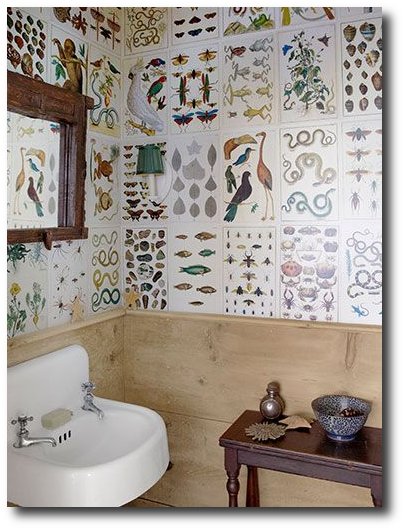 Inside a 1790’s New York Farmhouse- Visit countryliving.com
Inside a 1790’s New York Farmhouse- Visit countryliving.com
Swedish Decorating Ideas From Country Home Magazine
Restoration Hardware
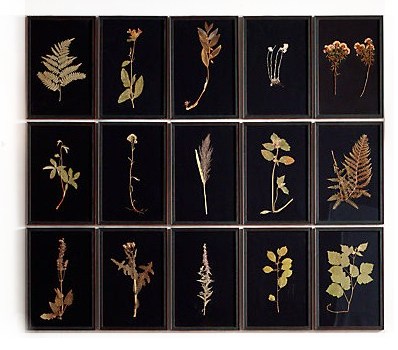 Hand-Pressed Botanicals on Linen From Restoration Hardware
Hand-Pressed Botanicals on Linen From Restoration Hardware
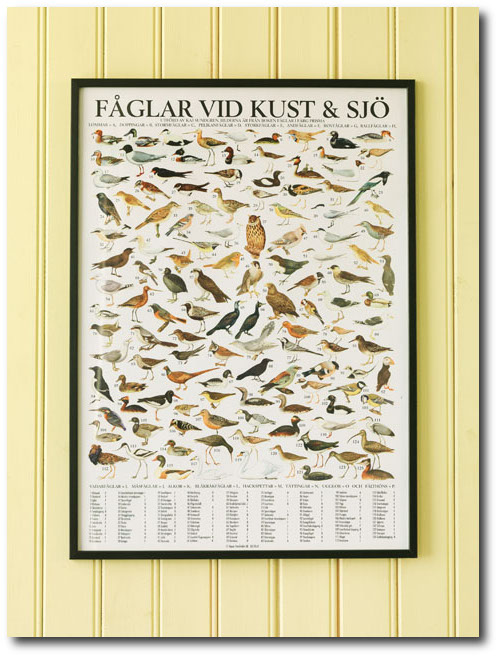 Gård & Torp From The Best of Swedish Blog
Gård & Torp From The Best of Swedish Blog








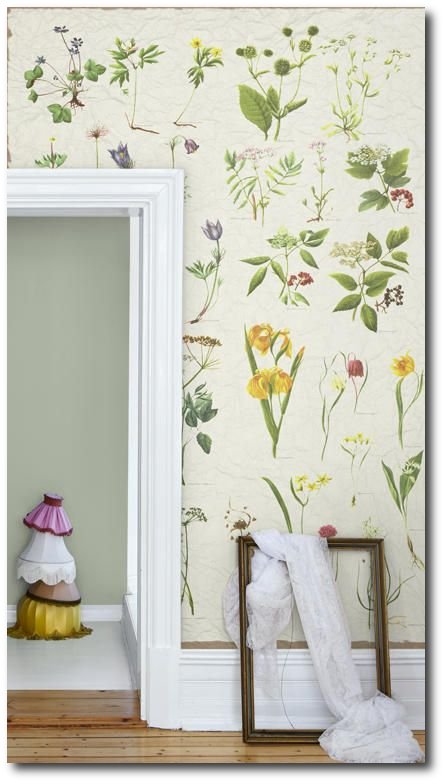

Quiet luxury inspired by 18th-century Sweden
Light - Patina - Heritage

Restoration Tools
- Matte Topcoat
- Pro Grade Brush Set
- Finishing Sealer In Matte
- Bronze Spray For Hardware
- Sticks To Everything Primer
- Dead Flat Varnish
- Stick To Everything - Matte Primer
- Transparent Aged Glaze
- Sticks To Everything Brown Primer
- Prima Transfers
- Dyke Brown Glaze
- Escutcheons
- Medallion Silicone Mold
- French Key Molds
- Portico Scroll
- Rusty Paint Finishes
Recent Posts
- 200 Swedish Antiques A Person Can Look For
- Rococo In The Nordic Countries
- For The Love Of Collecting Antiques – A Swedish Interior
- Gustavian Furniture – How to get the look – Ulla Kloster
- 3 Swedish Must Haves – Decorating A Home Around Swedish Antiques
- The Beautiful Wall Paintings Of von Echstedtska gården In Sweden
- 400 Professional Designers Picked Green As The New Color To Watch
- 5 Scandinavian Interior Design Tricks – Megan Slack
- 30 Gray Toned Paint Colors For Swedish Styled Interiors – Behr
- DIY Upper Kitchen Cabinets – Lindsay – White Buffalo Styling
- Bringing The Garden In For The Winter
- The Home Office – Why Not Make Yours Unique ?
- The Light And Airy Furniture Of Sweden
- Slipcovers Have Always Been Popular Through Time – Swedish Decorating
- The Couple Behind D. Larsson Interior and Antikhandel – Swedish Antiques
- 6 Colors You’ll Find In Every Scandinavian Home – Laura Barry
- 5 Decorating Mistakes Not To Make – By Gabrielle Savoie
- Designer Marshall Watson’s Scandinavian Newport Beach Home
- Designer Marshall Watson’s Scandinavian Summer House
- Swedish Inspired Kids Bedrooms
- 5 Kitchen Design Lessons You Can Learn from Scandinavian Interiors
- Jenny’s DIY Wide-Plank Plywood Flooring Studio Renovation
- Decor Mistakes All 20-Somethings Make
- Can I Stain Over Paint To Produce A Patina?
- Q&A With Swedish Designers Edie Van Breems and Rhonda Eleish
- How To Avoid Yellowed White Painted Furniture With General Finishes Products
- Colleen Martin, Founder of Swede Collection Tells Us Her Journey Of How She Began Reproducing Gustavian Furniture
- Expect To See More Warm Grays, Blues And Creams In Gustavian Decorating
- 8 Brands Of Gold Spray Paint Were Compared To Find The Best Color
- Essential Characteristics Of 18th Century Swedish Interiors
- Gustavian Style By Kristie Barnett
- 7 Places To Find Swedish Design For Toddlers
- Study Shows The Gustavian Period Has Defined All Tastes Through Time In Sweden
- Mix Old and New Like the Scandinavians Do- Chloe Taylor
- Swedish Furniture Design – What Makes The 1800’s So Obsessive
- 5 Pieces Of Wise Decorating Advice From Tricia Foley
- Impressive History Of Fine Swedish Table Linen
- Linen Has An Incredible History- Find Out Why……
- Life In 17th Century Norway & Sweden
- How To Select The Right Linen For Your Children’s Bedroom- Kids Room Decor Ideas
- Nordic Style Kids Bedroom Decor Ideas
- Decorator Tricia Foley’s Signature White Interiors
- 10 Tips From Interior Designer Furlow Gatewood
- Living In Norway- Norwegian Life In The 18th & 19th Centuries By Elisabeth Holte
- Investing In Mora Clocks – Expert Advice From Jo From Swedish Interior Design
- International Interior Decorating Magazines Worth Buying
- Swedish Council Of America Articles
- 5 Homes Decorated Around The Nordic Style
- Swedish Reproduction Furniture At Solgarden
- Behind The Rundale Palace in Latvia
- Nordic Style Historical Interior Decorating Books – Living Museums in Scandinavia
- Decorating Around Red- Historical Interior Design Ideas
- Florence De Dampierre Comments On Nordic Furniture In Sweden And Denmark
- 12 Designers Pick Their Favorite Paint Colors – House Beautiful
- 7 Of The Most Famous Swedish Furniture Designers And Decorators
- New Research Suggests Swedish Furniture In The 1700’s May Have Had Strong Colors
- Swedish Tripod Tilt-Top Candle Stand Tables
- Decorators Who Have Embraced The Nordic Style – 30+ Pictures
- A Look Behind Skogaholm Manor -18th century Swedish Decorating
- Decorating With Swedish Country Antiques- Darlene Peterson Buchanan
- 12 Interior Designers Pick Their Favorite Swedish Paint Colors
- 50+ Decorating Books Worth Looking At
- Swedish Decorating Inspirations In Yellow, Ivory And Beige- 50+ Pictures
- Decorating Around The Color Green – Swedish Style
- A Dallas, Texas Home Decorated Around The Swedish Style
- 3 Houses Decorated Around The Rustic Swedish Style
- Reproduction Distressed Furniture And Home Decor From Bliss Studio
- Buy The Swedish Style For Less
- 3 Swedish Style Homes Featured In Magazines
- Swedish Antiques From Debenham Antiques
- The History Behind Jean Bernadotte Otherwise Known As Karl Johan
- 5 Faux Wall Painting Techniques That Are Easier Than You Think
- Swedish Kids Rooms: 6 Ideas To Get The Look
- 5+ Nordic Homes Decorated Around White
- 10 Of The Best Tours In Sweden
- 3 Rustic Scandinavian Country Homes – Borrow Ideas From Norway and Denmark
- Spring Summer Checks and Florals For The Swedish Home
- 70 Swedish Furniture Pieces That Sell For Less- Swedish Decorating On A Budget
- Decorating With Blue: Swedish Style Decorating Ideas
- An Interview With Daniel Larsson- The Go-To Guy For Swedish Antiques
- 7 Scandinavian Country Decorating Books
- 75 Swedish Nordic Pinterest Pages! Oh Yes…More Eye Candy!
- 69 Inspiring Pictures Of Nordic Country Style Decorating
- 20 Scandinavian Gift Ideas
- 5 Ways To Add Life Into Worn-Out Furniture
- Mora Clocks: Investing In Swedish Heritage
- How To Decorate With Botanicals
- Buying Property In Sweden
- Get The Swedish Look By Installing Tongue And Groove Paneling
- The Lavish Interior Of The Swedish Häringe Castle
- The Swedish Wreta Gestgifveri Inn
- Paint It White He Says…. Washington Interior Designer Darryl Carter – Swedish Decorating
- 5 Pro Painting Tips For Black Furniture
- The Swedish Artist Carl Larsson
- A Guesthouse Decorated in The Swedish Style
- Swedish Furniture From Bukowski Market
- 216 Selections From Wallpaper Direct – Swedish Decorating
- A Look Behind The National Museum of Stockholm
- Antique Swedish Dealer Jane Moore’s Home Veranda Magazine
- A Swedish Collected Home In Upstate New York – Swedish Gustavian Decorating
- $100+ Solid Braided Rugs
- 60 Scandinavian Country Folk Art Books On Amazon
- 50 Examples Of Swedish Folk Country Interiors
- Designers Pick Their Favorite Gray Paints
- HOW TO: Paint Gustavian Finishes
- “Söderbo” A Home Untouched Since 1920
- Designer Martha Angus Loves Gustavian Style
- Les Indiennes Fabrics
- Decorating Secrets- 60 Quotes From The Best Experts In Design
- Swedish Kakelugn Stoves
- Helen Olsen’s Rungstedlund Home Revealed In Gods & Gardar Magazine
- The 1700 Collection Swedish Furniture
- Swedish Plaster Medallions
- The History Behind Empire Furniture From The Karl Johan Period -Liza Laserow
- Swedish Styled Wallpaper
- Nordic Style Drapery And Window Coverings
- The Gentle Palette of Swedish Antiques-Corey Amaro
- Custom Reproduction Swedish Furniture From Garbo Interiors
- 30 Spectacular Picks From Frantz Hemeleers Antiques
- Go Bold With Red- Part 1 Grand Sophisticated Interiors
- Go Bold With Red- Nordic Country Interiors
- The Baroque Style Of Switzerland
- Daniel Romualdez’s Swedish Montauk Home
- The Shocking History Behind “Emerald Green” Paint
- Stylish Looks For Slip-covering Your Furniture
- The Best 5 Websites For Purchasing Antique Hardware
- Fired Earth’s Anniversary Paint Collection
- Swedish Furniture Auctions -Uppsala Auktionskammare
- Louis Masreliez- The Designer Behind Gustav III’s Pavilion At Haga Park
- A Nordic Design Staple- The Swedish Kakelugn Tile Stove
- Swedish Antique Mirrors
- How To Decorate A Child’s Room In The Swedish Style
- Ruby Beets Swedish Rustic Home
- The Country Side Of Sweden- An All White Based Home
- Akerö in Södermanland, Sweden
- Krusenberg Herrgård: An 18th Century Swedish Luxury Hotel
- Wood Plank Flooring, A Swedish Design Must Have – Part 1
- Vinyl Plank Flooring, A Swedish Design Must Have – Part 2
- Laminate Wood Flooring, A Swedish Design Must Have – Part 3
- Plywood Plank Flooring, A Swedish Design Must Have – Part 4
- Painted Wood Flooring, A Swedish Design Must Have – Part 5
- The Romantic Baroque Style: Part 1- Stromholm
- The Romantic Baroque Style: Part 2 King Gustav Vasa
- The Romantic Baroque Style: Part 3 Skokloster & Steninge Palace
- The Romantic Baroque Style: Part 4 – A Collectors Home
- The Romantic Baroque Style: Part 5 Add Color
- Sweden’s Empire Decorated Rosersberg Palace
- The Most Beautiful Rococo Library In The World:The Anna Amalia Library
- 4 Resources For Swedish Decorating
- How Important Are Accent Pieces In A Swedish Home?
